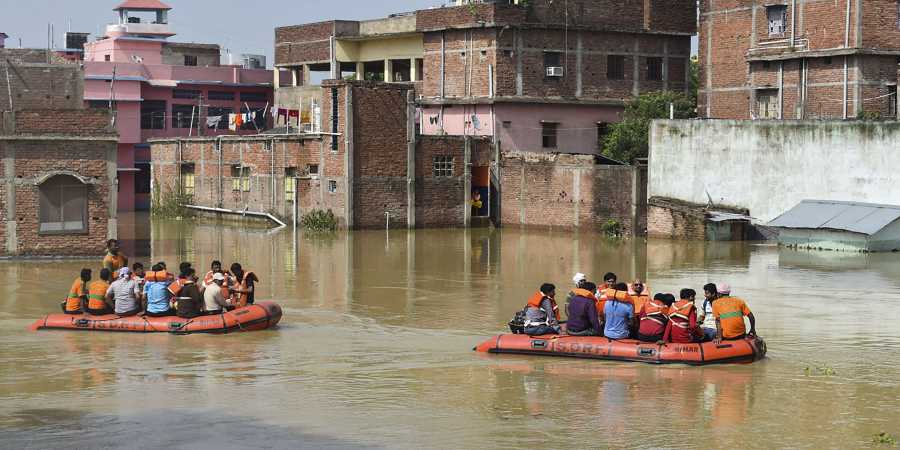Bihar, one of India’s flood-prone states, is facing another bout of severe flooding, triggering widespread concerns about the safety and well-being of its residents. The rising water levels have inundated numerous areas, causing displacement, damage to property, and disruption to daily life. As the state authorities and relief organizations step up their efforts, the focus is on mitigating the impact of the floods and providing necessary assistance to affected communities.
The flooding has been exacerbated by heavy monsoon rains and overflowing rivers, which have submerged homes, roads, and farmlands across various districts. Reports suggest that thousands of people have been displaced and are seeking shelter in relief camps set up by the government and non-governmental organizations.
Rescue and relief operations are in full swing, with teams working tirelessly to evacuate those stranded in affected areas and provide them with essential supplies. The efforts are hampered by the challenges posed by the swiftly changing floodwaters and the need to ensure the safety of both rescuers and the rescued.
Government agencies and relief organizations are also focusing on delivering clean drinking water, food, and medical assistance to the affected populations. Mobile medical units have been deployed to provide healthcare services to those in need, and measures are being taken to prevent waterborne diseases from spreading in the aftermath of the floods.
The situation in Bihar highlights the recurring challenges that the state faces during the monsoon season. Flooding, a perennial concern, underscores the importance of implementing long-term flood mitigation strategies, enhancing infrastructure resilience, and strengthening disaster response mechanisms.
As the floodwaters recede and relief efforts continue, the affected communities will require sustained support to rebuild their lives and livelihoods. The floods have once again emphasized the need for comprehensive planning, preparedness, and coordination among various stakeholders to effectively respond to and manage natural disasters.
The focus remains on providing immediate relief to those impacted by the floods and helping them recover from the aftermath. Additionally, the incident serves as a reminder of the broader issue of climate change and its implications for vulnerable regions like Bihar, urging a collective effort to address the challenges posed by extreme weather events.









